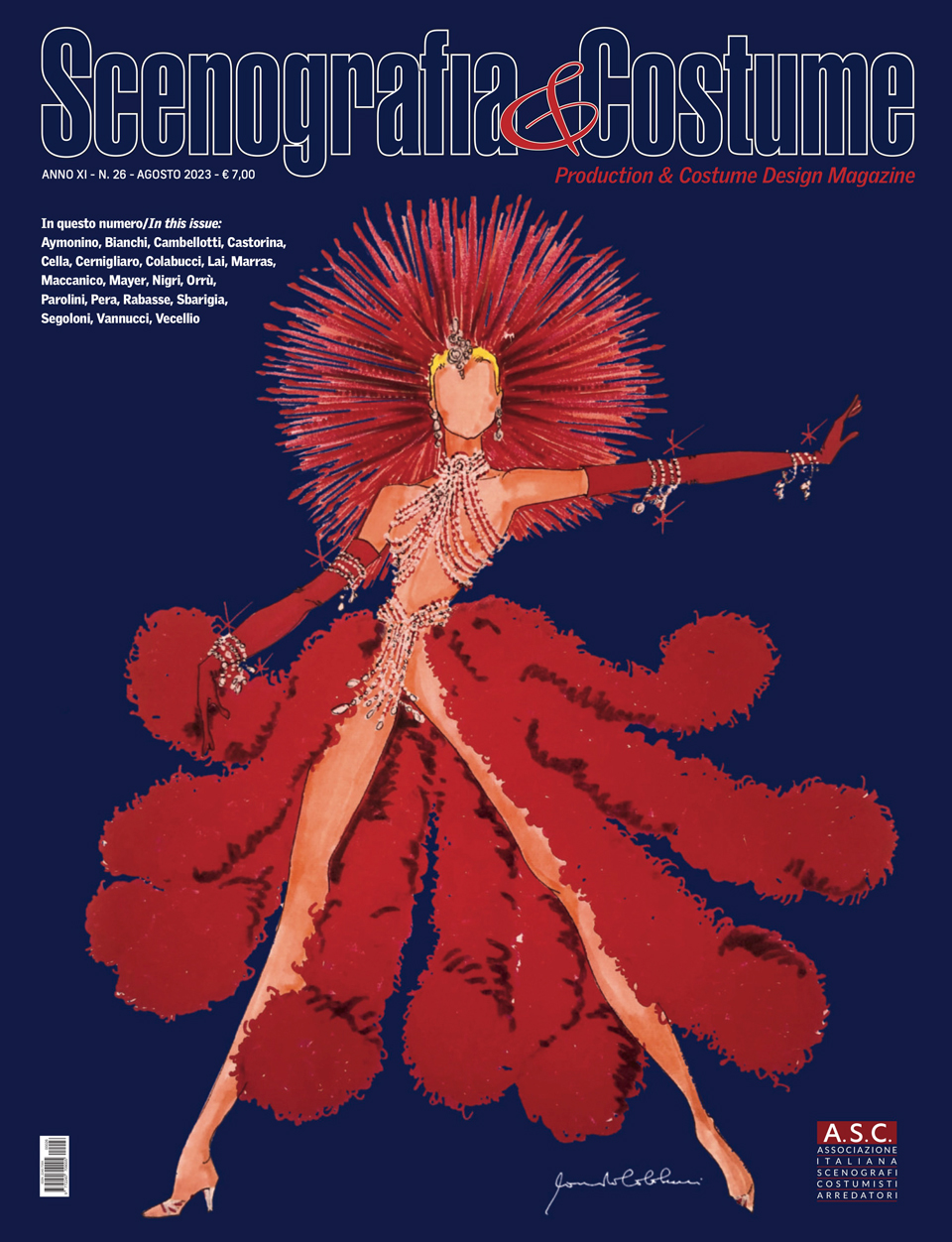Displaying items by tag: costume

Niente parole ad accompagnare l’esuberanza dell’immagine che abbiamo scelto come copertina del numero 26 di Scenografia&Costume: ci è sembrato, infatti, che la vitalità ottenuta da Corrado Colabucci per il figurino di uno dei costumi indossato al Moulin Rouge di Parigi non avesse bisogno di nient’altro che di deflagrare a tutta pagina.
I confini, d’altronde, vanno stretti un po’ a tutte e tutti i protagonisti di questa uscita estiva, a partire da Maria Lai, l’artista sarda che col suo "Legarsi alla montagna” ha saputo far tracimare la sua creatività fino a dar vita all’arte relazionale e a ispirare tante e tanti dopo di lei, nel teatro e nella moda compresi. Da qui le interviste a Giampietro Orrù, fondatore del Teatro Fueddu e Gestu, allo stilista Antonio Marras e a Federica Parolini e Daniela Cernigliaro, scenografa e costumista di una fortunata “Norma”, messa in scena da Luigi Di Giangi e Ugo Giacomazzi prima a Macerata e poi al Teatro Massimo di Palermo.
Ha superato i limiti del suo fare artistico Duilio Cambellotti, che oltre che pittore e scultore è stato scenografo e costumista nell’allora neo-nato Istituto Nazionale del Dramma Antico. E proprio per l’INDA, al Teatro Greco di Siracusa, è stato protagonista il titano per eccellenza in “Prometeo Liberato”, con la regia di Leo Muscato, scene di Parolini e costumi di Silvia Aymonino.
Hanno varcato la frontiera Stefania Cella, scenografa italiana da anni a Hollywood, e Simone Bianchi, illustratore conteso tra Marvel e Dc Comics; sono avvezzi agli sconfinamenti autori come Nanni Moretti, di cui abbiamo analizzato scene e costumi (di Alessandro Vannucci e Silvia Segoloni) in “Il sol dell’avvenire”, Marco Bellocchio in “Rapito” (scenografia di Andrea Castorina e arredamento di Valeria Vecellio), François Ozon in “Mon Crime” (scenografia di Jean Rabasse).
A completare il numero, i musei, le mostre, le premiazioni, gli artigiani e le news legate al mondo della scenografia e del costume.
E presto in versione cartacea, in vendita anche su Amazon, a 12 euro.
Tagged under



